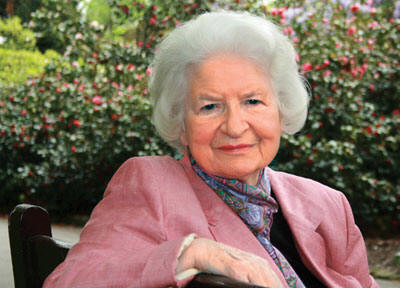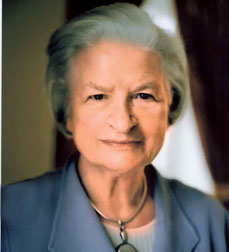|
P.D. James’ ‘Death Comes to Pemberley’:
Snobbery with violence
By Prof. Y. Gooneratne
Despite her own origins in a country vicarage, her consistently
satiric treatment of social snobs such as Sir Walter Elliot (of
Persuasion) and Emma Woodhouse in the novel that bears her name, and her
sturdy refusal to draw her heroines from the upper ranks of British
nobility so much beloved of the women novelists of her time, Jane Austen
is frequently regarded in our own day as a creator of elite novels for
elite readers.
 This may be due in part to the remarkable dignity of her writing,
which translates into a stance that would probably, in the world of
haute couture, be recognised as ‘poise’. She is fastidious in her choice
of word and phrase, precise and economical in deploying them, so much
the literary stylist that her manner is impossible to imitate. This may be due in part to the remarkable dignity of her writing,
which translates into a stance that would probably, in the world of
haute couture, be recognised as ‘poise’. She is fastidious in her choice
of word and phrase, precise and economical in deploying them, so much
the literary stylist that her manner is impossible to imitate.
It is no wonder that the many ‘sequels’ to Pride and Prejudice
written and published by hopeful Austenians with literary ambitions have
tended to fall on their faces with resounding thuds. A great stylist is
necessarily a hard act to follow, and Pride and Prejudice, to which
sequels have frequently been attempted, raises particular difficulties.
The original work is essentially a novel of its time (the early 19th
century). Austen was writing there of a world she knew, and modern
sequels, for all their attempts to present authentic recreations of 19th
century diction and atmosphere, succeed only in delivering costume
drama. Deprived of Austen’s ironic observation, their characters remain
as pasteboard figures; without her acute ear their conversations lose
depth and nuance. .
Novelists
I cannot be quite certain whether it was Fay Weldon or P.D. James
(both British women novelists of our own day) who so far missed Austen’s
essential irony and moral seriousness as to go on record with the
unfortunate remark that Jane Austen is essentially an “up-market
romantic novelist”.
I hope I am quoting correctly. I hope also that it was Weldon who
said it: if the remark had been made by James, many Austenians would
regard it as a crime much worse than any she has created in her
detective novels.
 In Death Comes to Pemberley, James, who clearly knows her Austen and
is, moreover, an acknowledged expert in the art of writing detective
stories, adroitly kills two birds with one well-aimed stone. Romantic
novels of the kind marketed by Mills and Boon (whose top sellers this
week include Lynne Graham’s The Secrets She Carried, Lynn Raye Harris’s
Unnoticed and Untouched, Jennie Lucas’s To Love, Honour and Betray and
Melanie Milburne’s His Poor Little Rich Girl are, after all, wildly
popular sellers: especially, I regret to say, to a largely uncritical
female readership. In Death Comes to Pemberley, James, who clearly knows her Austen and
is, moreover, an acknowledged expert in the art of writing detective
stories, adroitly kills two birds with one well-aimed stone. Romantic
novels of the kind marketed by Mills and Boon (whose top sellers this
week include Lynne Graham’s The Secrets She Carried, Lynn Raye Harris’s
Unnoticed and Untouched, Jennie Lucas’s To Love, Honour and Betray and
Melanie Milburne’s His Poor Little Rich Girl are, after all, wildly
popular sellers: especially, I regret to say, to a largely uncritical
female readership.
Detective fiction, though a much more ‘respectable’ read, is almost
equally popular. By combining the two genres in one book, P.D. James,
who is a very popular and experienced British writer of detective
fiction, smartly plays two winning cards at once, bringing off a double
whammy in a work that cannot fail to find buyers.
‘The year is 1803, ’ reads the publisher’s blurb, ‘and Darcy and
Elizabeth have been married for six years. There are now two handsome
and healthy sons in the Pemberley nursery.
Secure life
Elizabeth’s beloved sister Jane and her husband, Bingley, live within
seventeen miles, the ordered and secure life of Pemberley seems
unassailable, and Elizabeth’s happiness in her marriage is complete. But
their peace is threatened and old sins and misunderstandings are
rekindled on the eve of the annual autumn ball.
The Darcys and their guests are preparing to retire for the night
when a chaise appears, rocking down the path from Pemberley’s wild
woodland, and as it pulls up, Lydia Wickham, an uninvited guest, tumbles
out, screaming that her husband has been murdered.’
All the elements that appeal to Janeites are pressed into one
inviting paragraph. Fitzwilliam Darcy and Elizabeth Bennet became
readers’ favourites as soon as they appeared in print, and the many
cinematic versions made of their romantic love/hate relationship in
recent times have confirmed their status as the world’s literary
sweethearts.
 We are pleased to learn that their marriage is both happy and
fruitful – did we ever doubt that it would be? - and look forward to
meeting again Elizabeth’s sisters Jane and Lydia, who are important
characters in the Austen novel and are due to make an appearance in this
one. We are pleased to learn that their marriage is both happy and
fruitful – did we ever doubt that it would be? - and look forward to
meeting again Elizabeth’s sisters Jane and Lydia, who are important
characters in the Austen novel and are due to make an appearance in this
one.
Even the “shades of Pemberley” are evoked, in the reference to a
‘wild woodland’, and many readers of that other female novelist Daphne
du Maurier would recognise an allusion to a key scene in Rebecca in
Pemberley’s ‘annual ball’.
Finally, in a climactic sentence, we are promised a sensational event
of the kind that Austen herself carefully omitted from her books, but no
crime novel that deserves its name can possibly do without: a delectably
violent and bloody murder.
Who dunnit? Of course, this reviewer will not spoil the suspense by
revealing the answer, or even by hinting at one. We authors must stick
together, and support one another. Let us look, instead, at some of the
book’s most attractive features.
One of these is the author’s talent for credibly filling in ‘blanks’
in the original (Mary Bennet, for example, finds a clerical husband, and
Georgiana Darcy a suitable admirer). James even indulges in some playful
intertextual games, establishing links between one Austen novel and
another.
A good example of this occurs at the novel’s end, when ‘Georgie’, an
orphaned child on the Pemberley estate, finds a ‘home’ with Robert and
Harriet Martin at the Abbey Mill farm. Remember Harriet? She was the
‘pretty little friend’ of Emma Woodhouse in Emma, and ‘Mrs Emma
Knightley’, now the chatelaine of Donwell but still Harriet’s friend,
gives this charitable adoption her particular patronage.
Authors love playing games of this kind, for their own pleasure and
the entertainment of their readers.
( P.G. Wodehouse does it with a single, glancing allusion in
Something Fresh that links the Woosters with Lord Emsworth’s family at
Blandings Castle.)
It is interesting, and probably significant, that the only links
Austen seems to have established for her own books tie them, not to
other books, her own or anyone else’s, but to real life. Visiting a
portrait gallery in London, she amused herself on one occasion by
looking for a portrait of ‘Mrs Darcy’. Finding none that could satisfy
her, she wrote to her sister Cassandra that Mr Darcy’s admiration of his
wife probably made him reluctant to expose her features to the gaze of
strangers!
Readers play games, too. Who is the reader of Austen who has not
amused him/herself by looking into the fictional future, picturing those
unexpected visits paid by Mr Bennett to his son-in-law’s library at
Pemberley, inventing fireside conversations at Hartfield between George
and Emma Knightley as Mr Woodhouse sips his bowl of ‘wholesome’ thin
gruel, or imagining Anne Wentworth enjoying the fresh sea breezes on the
deck of a sailing ship bound for the Antipodes?
Constructing credible plots is, of course, a crime-writer’s stock in
trade, and in this area James can have very few rivals. But she is also
good at providing alternative points of view, as when she outlines
Meryton society’s cynical opinion of the Elizabeth/Darcy love-match.
What her book does not do, alas, despite the publisher’s claims to
the contrary, is to satisfactorily provide either ‘psychological and
emotional richness of characterisation’ or ‘a pitch-perfect recreation
of the world of Pride and Prejudice’.
But perhaps we should not expect too much. A great stylist is
necessarily a hard act to follow. It is no wonder that the many
‘sequels’ to Pride and Prejudice written and published by hopeful
Austenians with literary ambitions have tended to fall on their faces
with resounding thuds.
A great stylist is necessarily a hard act to follow, and Pride and
Prejudice, to which sequels have frequently been attempted, raises
particular difficulties.
The original work is essentially a novel of its time (the early 19th
century). Austen was writing there of a world she knew, and modern
sequels, for all their attempts to present authentic recreations of 19th
century diction and atmosphere, succeed only in delivering costume
drama. Deprived of Austen’s ironic observation, their characters remain
as pasteboard figures; without her acute ear their conversations lose
depth and nuance. |

